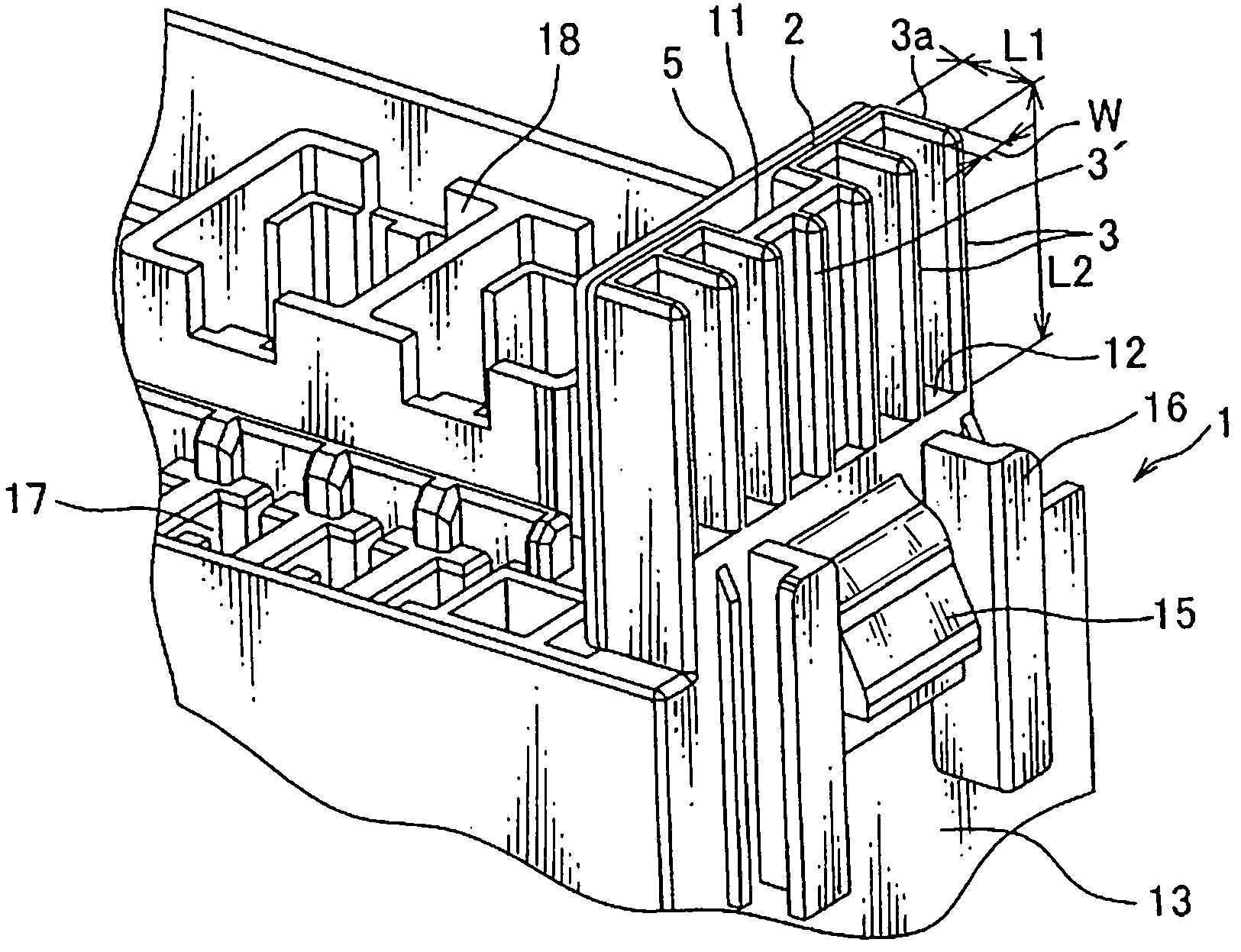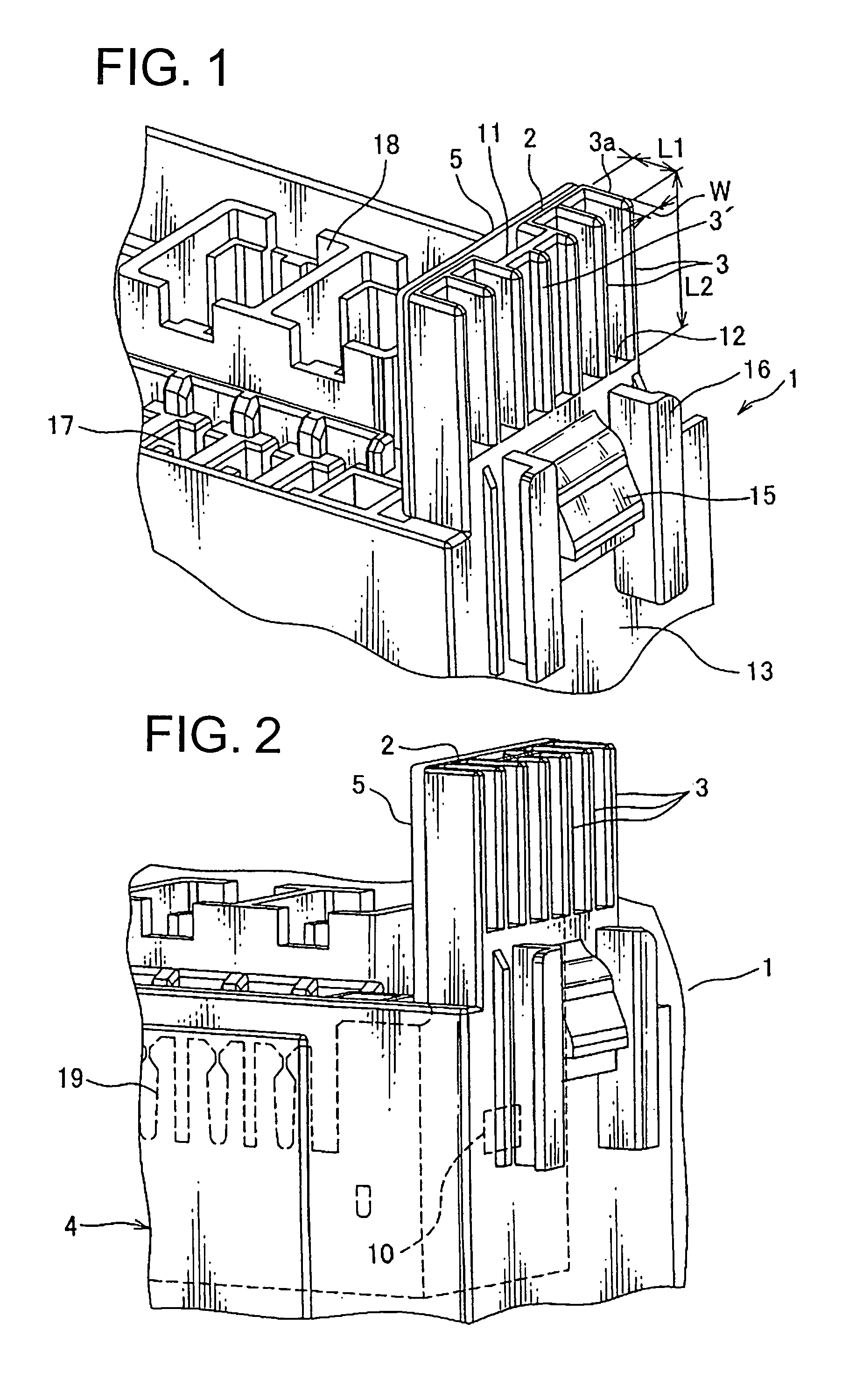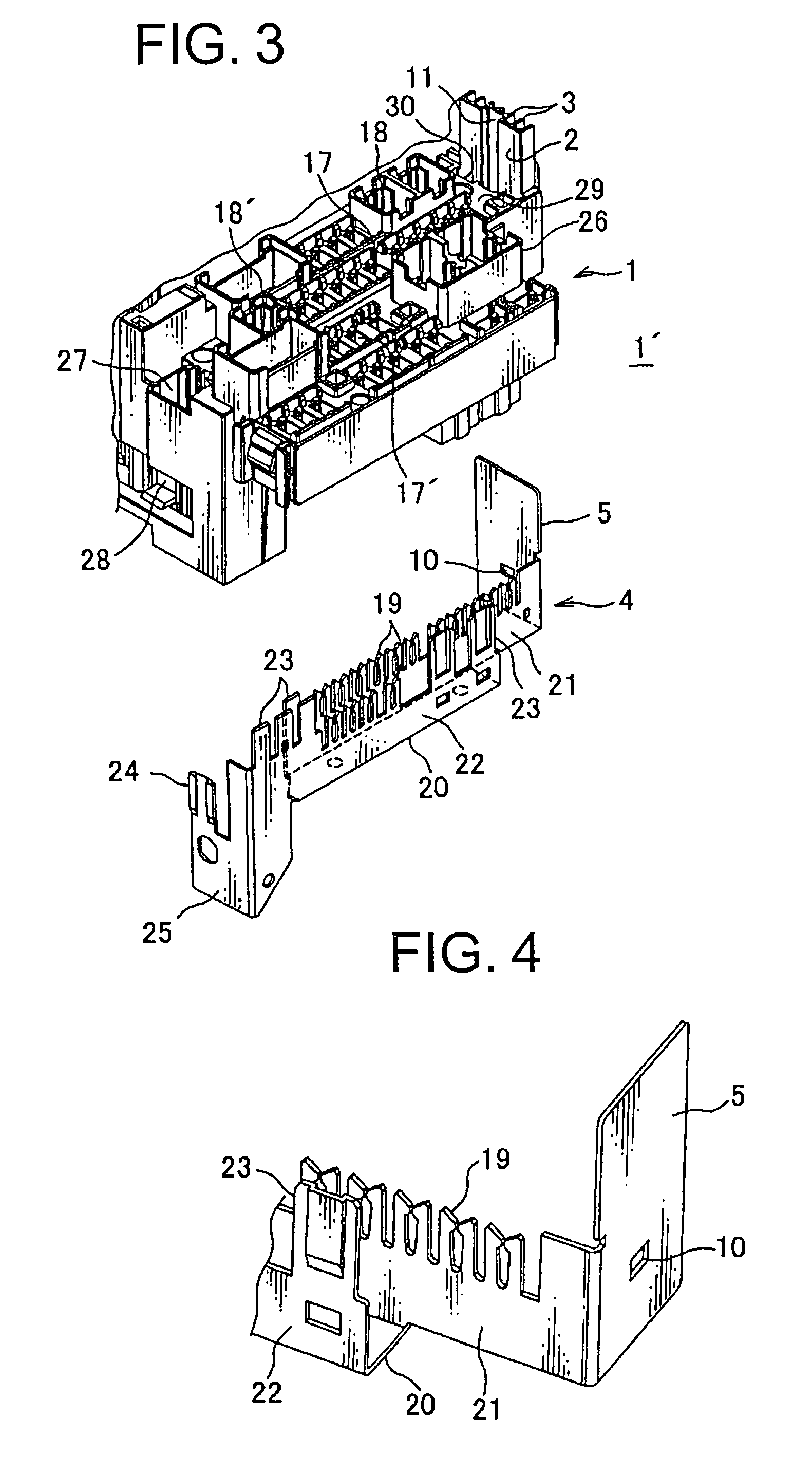Rescue terminal structure
a terminal structure and terminal technology, applied in the direction of emergency protective devices, transportation and packaging, electric/fluid circuit, etc., can solve the problems of unable to stably and safely supply electric power, and the booster cable might be pulled
- Summary
- Abstract
- Description
- Claims
- Application Information
AI Technical Summary
Benefits of technology
Problems solved by technology
Method used
Image
Examples
Embodiment Construction
[0027]A rescue terminal structure according to one embodiment of the present invention is described below with reference to FIGS. 1 to 5.
[0028]Referring to FIG. 1, the rescue terminal structure includes three constituent parts, i.e., a terminal supporting plate 2, a plurality of ribs 3, and a rescue terminal 5.
[0029]The terminal supporting plate 2 is formed in one piece with a body of a fuse block made of insulating synthetic resin (block body 1 or junction box body). The terminal supporting plate 2 has the plurality of elongated vertical ribs 3 extending parallel to each other and each upstanding on the outer surface of the terminal supporting plate 2.
[0030]The bus bar has the rescue terminal 5 in a shape of a flat vertical plate. The bus bar 4 is made of electrically conductive metal (see FIG. 2). The rescue terminal 5 is arranged along and in contact with an inner surface of the terminal supporting plate 2 (i.e., a surface opposite the above-mentioned outer surface on which the r...
PUM
 Login to View More
Login to View More Abstract
Description
Claims
Application Information
 Login to View More
Login to View More - R&D
- Intellectual Property
- Life Sciences
- Materials
- Tech Scout
- Unparalleled Data Quality
- Higher Quality Content
- 60% Fewer Hallucinations
Browse by: Latest US Patents, China's latest patents, Technical Efficacy Thesaurus, Application Domain, Technology Topic, Popular Technical Reports.
© 2025 PatSnap. All rights reserved.Legal|Privacy policy|Modern Slavery Act Transparency Statement|Sitemap|About US| Contact US: help@patsnap.com



